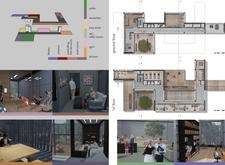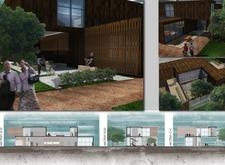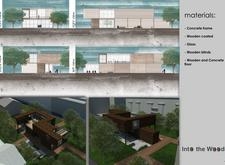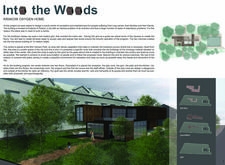5 key facts about this project
At its core, the project is designed to fulfill specific functions that cater to the community it serves. Each element within the architectural plan is strategically placed to enhance usability and accessibility, promoting an inclusive atmosphere. Whether this involves communal spaces, individual areas for quiet reflection, or facilities tailored for various activities, the design underscores a commitment to fostering interaction and engagement among its users.
The project incorporates a range of materials that evoke a sense of harmony with its surroundings while ensuring durability and sustainability. Materials such as brick, glass, steel, and concrete are meticulously chosen not only for their structural properties but also for their aesthetic qualities. The use of natural materials like wood or stone further emphasizes a connection to the environment, reinforcing the project's commitment to ecological sensitivity. The finish of these materials often reflects both modern techniques and traditional craftsmanship, demonstrating a respectful nod to architectural history while also looking forward.
Detailing plays a crucial role in this architecture, as the design thoughtfully considers every aspect from large volumes to minute fixtures. Architectural details such as window placements, overhangs, textures, and finishes contribute significantly to the project's overall character. For instance, large windows might allow natural light to permeate interior spaces, creating a warm and inviting atmosphere. Overhangs could provide shade, thereby contributing to energy efficiency and comfort. These choices showcase a keen awareness of environmental conditions as well as a dedication to creating spaces that prioritize user experience.
An essential feature of the project is its unique design approach. Rather than adhering strictly to established conventions, the design encourages exploration of new architectural ideas that reflect contemporary needs. Innovative layouts and configurations might include flexible spaces that can adapt to various functions over time, promoting longevity and relevance in a rapidly changing society. This adaptive reuse also reflects sustainable practices, positioning the project as a responsible choice for future developments.
Landscaping is another critical component of the overall design. The integration of green spaces not only enriches the aesthetic experience of the project but also plays a vital role in supporting biodiversity and enhancing the local ecosystem. Thoughtful placement of plants, trees, and water features creates a seamless transition between the interior and exterior, offering users a holistic experience that acknowledges nature's importance.
The architectural design outcomes of this project resonate on multiple levels. Functionally, it stands as a model of efficiency and user-friendly design, catering to the diverse needs of its users while maintaining an uncomplicated flow. Visually, the project presents a cohesive yet dynamic presence in its context, inviting curiosity and appreciation from observers and users alike.
Overall, the project's architecture speaks to the importance of balance in design—between aesthetics and functionality, innovation and tradition, and human habitation and environmental stewardship. To explore this project further and gain deeper insights into its architectural plans, sections, designs, and ideas, readers are encouraged to delve into the project's comprehensive presentation. Engaging with these elements will provide a richer appreciation of the architectural thought process and the careful consideration that defines this project.


























